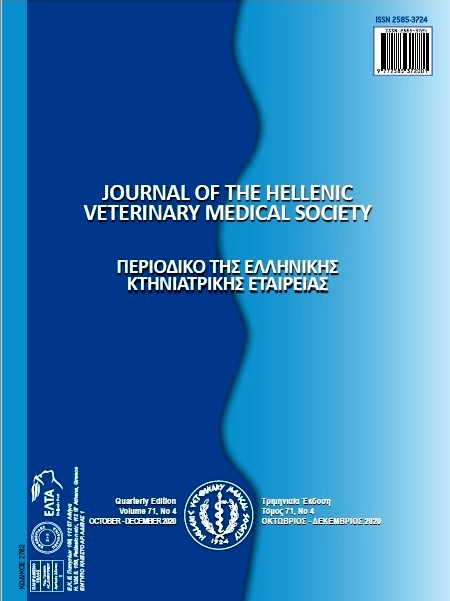The influence of rodenticides in dissemination of endoparasites of dogs and cats
Abstract
Mice and other rodents are well known to play an important role in the biological cycle of many parasites of pets. Among the endoparasites identified in Greece which could be transmitted to dogs and/or cats from colloquially rodents are Spirocerca lupi, Ascaridae namely Toxocara canis, Toxascaris leonina in dogs and Ancylostoma caninum, A.braziliense, Trichinella spiralis, Echinococcus granulosus, Toxoplasma gondii, Cryptosporidium spp and Leihsmania spp, while cats can be infested by Toxocara cati, Toxascaris leonina, Ancylostoma tubaeformae, A.braziliense, Aelurostrongylus abstrusus and Taenia taeniaformis, Toxoplasma gondii, Cryptosporidium spp and Leihsmania spp. The route of infection of pet includes in many cases ingestion of parasite infested rodents. A number of these parasites are also of great Public Health importance because they are causing zoonotic diseases. Because of the large numbers of rodents in some areas and their role in transmitting diseases in man and animals, rodenticide programs are performed by individuals or state agencies. Rodenticides are chemical and non-chemical compound which are used to eliminate rodents. However, attention should be paid on their use and manufacturer’s instructions should be strictly followed because of the risk of accidental poisoning of pets and children. It can be conclude that prudent rodent control is essential in the prevention of parasite infection of pets and the transmission of zoonotic parasite to humans.
Article Details
- Come citare
-
LEFKADITIS, M. (2018). The influence of rodenticides in dissemination of endoparasites of dogs and cats. Journal of the Hellenic Veterinary Medical Society, 67(3), 139–146. https://doi.org/10.12681/jhvms.15632
- Fascicolo
- V. 67 N. 3 (2016)
- Sezione
- Review Articles

Questo lavoro è fornito con la licenza Creative Commons Attribuzione - Non commerciale 4.0 Internazionale.
Authors who publish with this journal agree to the following terms:
· Authors retain copyright and grant the journal right of first publication with the work simultaneously licensed under a Creative Commons Attribution Non-Commercial License that allows others to share the work with an acknowledgement of the work's authorship and initial publication in this journal.
· Authors are able to enter into separate, additional contractual arrangements for the non-exclusive distribution of the journal's published version of the work (e.g. post it to an institutional repository or publish it in a book), with an acknowledgement of its initial publication in this journal.
· Authors are permitted and encouraged to post their work online (preferably in institutional repositories or on their website) prior to and during the submission process, as it can lead to productive exchanges, as well as earlier and greater citation of published work.






